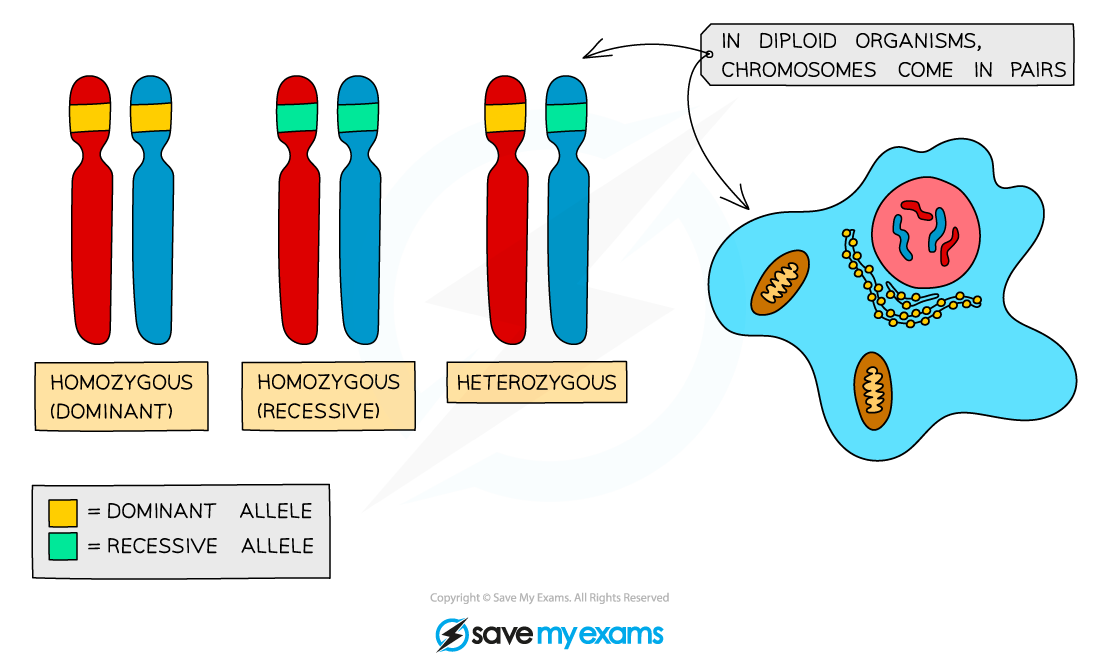The Genome & Genetics (OCR GCSE Biology A (Gateway)) : Revision Note
Genetic Key Terms
There are many key terms associated with the inheritance topic
A gene is a short length of DNA found on a chromosome that can code for a particular characteristic (expressed by the formation of different proteins)
Alleles are variations of the same gene
As we have two copies of each chromosome, we have two copies of each gene and therefore two alleles for each gene
One of the alleles is inherited from the mother and the other from the father
This means that the alleles do not have to ‘say’ the same thing
For example, two copies of a particular gene could contribute to eye colour but one allele could code for brown eyes and one allele could code for blue eyes
The observable characteristics of an organism (seen just by looking - like eye colour, or found – like blood type) is called the phenotype
The combination of alleles that control each characteristic is called the genotype
Alleles can be dominant or recessive
A dominant allele only needs to be inherited from one parent in order for the characteristic to show up in the phenotype
A recessive allele needs to be inherited from both parents in order for the characteristic to show up in the phenotype.
If there is only one recessive allele, it will remain hidden and the dominant characteristic will show
If the two alleles of a gene are the same, we describe the individual as being homozygous (homo = same)
Homozygous dominant means having two copies of the dominant allele
Homozygous recessive means having two copies of the recessive allele
If the two alleles of a gene are different, we describe the individual as being heterozygous (hetero = different)
When completing genetic diagrams, alleles are abbreviated to single letters
The dominant allele is given a capital letter and the recessive allele is given the same letter, but lower case

Alleles are different forms of the same gene. You can only inherit two alleles for each gene, and they can be the same (homozygous) or different (heterozygous)
We cannot always tell the genotype of an individual for a particular characteristic just by looking at the phenotype – a phenotype associated with a dominant allele will be seen in both a dominant homozygous and a dominant heterozygous genotype
Key Terms & Definitions Table

Examiner Tips and Tricks
Whether an allele is dominant or recessive does not affect the mechanism of inheritance of the allele.
Many students think that the dominant allele dominates the recessive allele preventing it from being expressed or that the recessive allele is the result of the dominant allele being absent (neither of these is true!) Whether an allele is dominant or recessive depends on the particulars of the proteins they code for.
The Genome
The entire set of the genetic material of an organism is known as its genome
Within the genome, the order nucleotide base sequences in the DNA provides the instructions for making all of the proteins required by all of the cells of the organism
All living things have a unique genome, and the size can vary significantly between species
As a result of the Human Genome Project, biologists now know the entire human genome
They have worked out all the genes and locations of those genes in human DNA
Genome Size Table



You've read 0 of your 5 free revision notes this week
Sign up now. It’s free!
Did this page help you?
